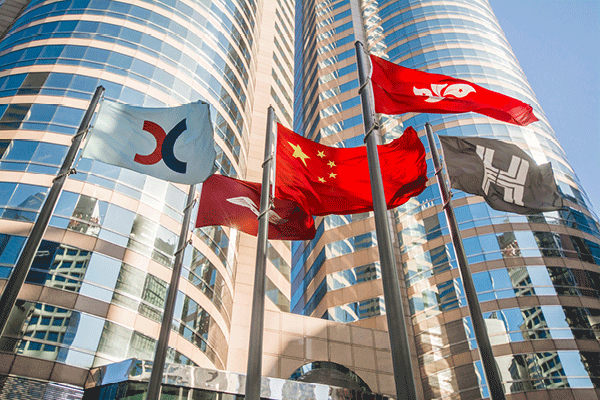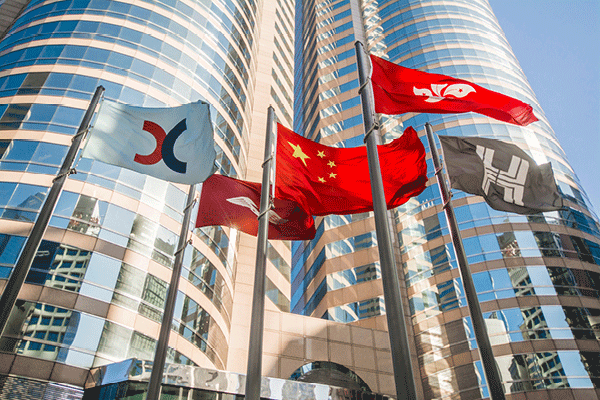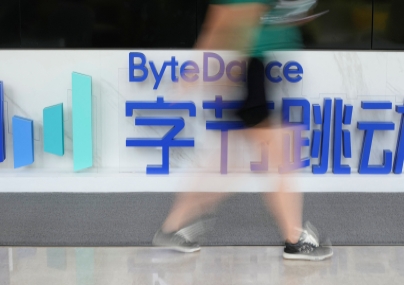
Since being overtaken by New York and even Shanghai as the world’s top IPO markets, Hong Kong is drastically revamping its stock exchange’s listing rules to attract the hottest – and highest valued – tech companies in China. However, there are far too many grey areas at this point to gauge what kind of impact this move will have, say lawyers.
This year, Hong Kong’s stock exchange is drastically revamping its listing rules, both for its main board and its second board. The changes affecting the main board is expected to become effective in mid-2018, and the biggest change is allowing dual-class share listings.
Dual-class share structures allow one set of shareholders – such as the founders and management – to have greater voting rights than others, seen as protection against pressure for short-term returns. This type of structure has been favoured by young tech companies, but there are criticisms by governance advocates that it could be abused by company insiders.
This was the sticking point between Alibaba and the Hong Kong Exchanges and Clearing in 2014. The e-commerce giant wanted to list in Hong Kong, but also wanted dual-class shares. So when the HKEX refused to accommodate alternative shareholding structures, Alibaba went to New York instead, which does allow dual-class shares, and went on to have a record $25 billion public float. Now, New York and even Shanghai have overtaken Hong Kong as the world’s top IPO markets.
The Asian financial hub doesn’t want to miss another Alibaba to its rivals, especially with the likes of Alibaba's Ant Financial, Ping An’s Lufax, and Xiaomi – which is seeking to list with a whopping $100 billion valuation – all preparing to go public.
Attracting these tech companies by allowing dual-class shares will also diversify the Hong Kong stock exchange, which is dominated by financial companies, industrial firms and developers. Such tech companies have represented just 3 percent of Hong Kong listings in the past decade by market value, compared with 47 percent of New York listings, according to an HKEX discussion paper in June.
So the HKEX is, after much debate, finally allowing dual-class shares, though the company must be classified as an “innovative” firm with at least HK$10 billion ($1.3 billion) in valuation and annual minimum revenue of HK$1 billion.
There are also two other significant changes. The HKEX will allow biotech companies with no revenue track record (“pre-revenue”) to list, as long as they have a minimum expected market capitalisation of HK$1.5 billion, and will also facilitate secondary listings of “innovative” Chinese companies primarily listed in the U.S. or the main market of the London stock exchange with a market cap of at least HK$10 billion.
WHAT IS ‘INNOVATIVE'?
The stock exchange, companies, investment bankers and lawyers are all excited at the prospect of huge “innovative” companies listing in Hong Kong, but what exactly does the HKEX mean by an “innovative” company? There is no clear definition yet, and this is what companies are asking their lawyers.
“The main board listing rule changes regarding the financial threshold is very clear – either you meet the market cap requirement or you don’t. But regarding the definition of ‘innovative’ company, it’s less clear,” says Daniel Wan, a partner at Addleshaw Goddard.
“At the moment, some clients are asking us whether we could do a consultation with the regulators regarding the definition and whether they are considered an ‘innovative’ company, though we’re advising not to do that yet as we haven't seen how the stock exchange is going to amend the listing rules.” A consultation paper on the proposed rule changes is expected to be released in the first quarter this year.
“Obviously, if the company is doing a very traditional business but claims they have an app and does a small amount of transaction through the app, that’s not enough to be an ‘innovative’ company,” Wan adds. “Though if they do the whole operation through the app, then that may be a different story.”
The HKEX may set out a clearer definition of an “innovative” company after the consultation, and John Baptist Chan, a partner at King & Wood Mallesons, believes the exchange would like to let the market practitioners make their own judgement call.
“It's quite similar to the previous changes on other laws,” Chan says. “For example, in chapter 21 of the listing rules – regarding ‘investment companies’ – there is still no clear definition, which is always the case that the exchange would let the market to interpret themselves and ask them to endorse on a case-by-case basis.”
TOO HIGH
Another, and bigger, question companies are asking is the expected market cap requirement. “It’s very high compared to the market cap requirement of HK$500 million for ordinary main board applicants,” says Wan. HK$10 billion is indeed quite high, making it probably only available to companies like “unicorn” startups.
“So those companies who regard themselves as an ‘innovative’ company with dual-class share structure will ultimately need to satisfy and convince the market that they will achieve a HK$10 billion market cap before the practitioners in Hong Kong will consider inviting these companies to come and list,” says Wan.
“There are a lot of ‘innovative’ companies in China, but not all of them could meet this high market cap,” he adds. “The questions asked is whether it will be lower in the future.”
The answer Wan has is to wait and see as he believes the regulators will take some time to observe the market’s response to these ‘innovative’ companies and whether they perform well in the Hong Kong market without having any issues. If it goes well, it could be reduced in a few years.
TRADITIONAL BUSINESS
There is one important point that hasn’t been discussed yet, says KWM’s Chan. Only “innovative” companies are allowed to list in Hong Kong’s main board with dual-class shares. But after one successfully lists, can it acquire a big traditional business like a property company?
“There’s silence,” answers Chan. “I'm not sure whether the consultation paper in March will include this, but definitely this is something that needs to be discussed.”
“We don't want the issuer or the company to manipulate the rules,” he says. “It could be the case that, for example, if a property company wants the dual-class status and it starts an ‘innovative’ company, got it listed with dual-class shares and then injected it back. So we are not sure if it is possible under the new regime.”
“We have not seen it and it is not yet addressed, but my guess,” he adds, “is that one way to protect the interest of the minority shareholders is by setting more stringent requirements under chapter 14 ‘notifiable transactions’ of the listing rules, and in particular, on the reverse takeovers rule to tackle this problem.”
RAISE THE BAR
Though there are still questions regarding the listing rule changes, there is no question that it is a significant step forward in the right direction.
“These listing rule changes proves to us that the exchange is now having a more open mind to attract companies from all different kinds of platforms instead of the traditional Chinese-based issuers,” says Chan. “We now want to attract big companies that want dual-class shares, attract biotech companies, attract companies already listed in other places, so all these is the way that the exchange wants to consolidate its position as a top IPO venue.”
Not only is it set to attract the right kind of companies to Hong Kong’s stock exchange, but also change how they’re going about it.
There is another – seemingly minor, especially compared to the others – change to the main board listing rules: the minimum market cap to list (without dual-class shares, just the standard one-share, one-vote) is raised from HK$200 million to HK$500 million and the minimum public float value is also lifted from HK$50 million to HK$125 million. These changes will take effect in the middle of this month.
This increase in the minimum requirements will raise the barrier to entry into the main board, which removes those with lower market cap, and thus also raises the general market cap of the listed companies. This, says Addleshaws’ Wan, will make Hong Kong a more attractive place for Chinese companies, which would have listed back in the mainland where they would have received a higher valuation.
“Chinese companies may prefer to list in Shanghai or Shenzhen instead of Hong Kong because the investors in China will give them higher valuations. This is sometimes an obstacle for Hong Kong practitioners to lure Chinese companies to come to Hong Kong,” he explains.
“So you make that valuation gap between Hong Kong and China narrower, and that,” he says, “will help even more IPO candidates to come to Hong Kong from China.”
GEM CHANGES
The changes to the HKEX’s second board – the Growth Enterprise Market (GEM) – will take effect in the middle of this month.
Generally, the changes will make it tougher to list on the GEM. This comes after more than a decade of declines in trading volumes with wild price swings of stocks due to very concentrated shareholdings.
In the past few years, there have been fears of market manipulation and a growing “shell business” problem, particularly last year, when the Securities and Futures Commission and HKEX issued a strongly worded joint statement warning against these problems.
The GEM listing reform includes increases in the minimum requirements of: annual cash flow from HK$20 million to HK$30 million, expected market cap at the time of listing from HK$100 million to HK$150 million, and public float value at the time of listing from HK$30 million to HK$45 million.
It also requires GEM applicants to issue at least 10 percent of their IPO shares to actually be available to the public to trade, instead of being done by private placement involving connected persons.
“People may not be focusing on the particular part of the requirement on the connected persons, but it’s actually a substantial change, says KWM’s Chan.
“Before, it used to be that if a company wants to list on the GEM, the company can have a lot of connected persons helping them to subscribe their shares and sell shares more easily,” he explains. “But now, being required to meet the same threshold of the main board, they can't place their shares to connected persons except obtaining consent from the HKEX.”
“Originally, most of the IPOs on the GEM were done by entrepreneurs who wanted to list their successful businesses and operations,” notes Chan. “But recently, we have seen cases where there are some ‘behind the scene’ controllers.”
These controllers have a lot of money, controlling many companies through different layers of vehicles and are trying to establish and make use of shelf companies. Some even buy and sell shelf companies, treating it as trading, which is not what the exchange intended when it first created the GEM almost 20 years ago.
“So the exchange is including these more stringent mechanisms so as to tackle these and better safeguard minority shareholders’ protection,” says Chan.
TRANSFER DIFFICULTY
Another layer of difficulty added is transferring from the GEM to the main board. The HKEX plans to reposition its second board as a standalone board, removing the streamlined process for GEM transfers.
The exchange also imposes two requirements: companies need to appoint a sponsor to conduct due diligence for GEM transfers, and also publish a ‘prospectus standard’ listing document, meaning the GEM transfer applications are treated as a new listing application.
“In the past, when GEM-listed companies are transferring to the main board, they just needed to issue an announcement and that's it,” says Addleshaws’ Wan. “But now, they need to re-appoint the sponsor and prepare again and reissue the prospectus.”
“They basically need to do another IPO again for them to transfer to the main board, and that will impact the existing GEM because in the past it was a stepping stone to the main board, but now it is very clear that it is a standalone board.”
In the future, the attractiveness of listing on the GEM will be less, and companies may prefer to wait one or two more years to satisfy the requirement for the main board instead, he adds.
There is a grace period for GEM companies, allowing them to still transition to the main board without the tougher requirements.
“Recently we have received a number of enquiries about the applicability of all these new rules and transitional rules, because there's a three-year grace period for all the existing GEM listed companies,” says Chan. “Those companies would like to know whether or not the new rules will apply to them.”
“Companies need to meet some criteria in order to take advantage of the grace period. For example, you need to be listed on the HKEX before June 16, 2017, the day when the consultation paper was out, so you didn’t have the knowledge that the exchange proposed to change the rules,” he explains. “And the grace period also applies only if you have not changed your major business line and you have not changed your controlling shareholders.”
FUTURE
Immediately after the publication of the GEM consultation paper, many companies have filed to list on the GEM because they want to catch the last train, notes Chan. In 2017, there were around 80 GEM companies listed out of around 170 companies listed on HKEX.
At least during the three-year grace period, Chan expects more companies will see if they are able to still use the streamlined process to transfer to the main board.
But in the long run, he believes the numbers of companies listing on the second board may become fewer with these tougher listing requirements.
“If they are a financially sound company, they may want to wait one or two more years and then gain the main board listing status, which is not a lot more difficult now,” he says. “So I presume that the numbers of new GEM board listing will remain unchanged, or even go down a bit.”
But thanks to the other changes in the main board, the total numbers of Hong Kong listings, Chan believes, may go up.
Hong Kong exchange says companies enquiring about dual class share system
By Kane Wu of Reuters
Hong Kong Exchanges and Clearing (HKEX) said it had received enquiries from companies for dual-class share listings as both it and the Singapore bourse gear up to allow such initial public offerings.
Hong Kong’s proposed changes, which stem from a discussion paper published in June 2017, come as Hong Kong bankers expect a slew of blockbuster IPOs from Chinese technology firms with an estimated combined market value of some $500 billion over the next two years.
“Completing the listing reform is one of our top priorities in order to secure our relevance as a premier global capital formation centre,” HKEX CEO Charles Li told reporters as he outlined the exchange’s strategic goals for 2018.
“We have already received some enquiries about listing under the new regime, and we plan to consult the market on proposed rule changes before the end of this quarter,” he said.
“We are targeting the beginning of June for the publication of the new rules,” Li said.
Dual-class shares, which typically give one set of shareholders greater voting rights than others, have been favoured by many younger tech firms, with the extra voting power given to top executives seen as protection against pressure for short-term returns.
Hong Kong is hoping that dual-class shares will put in on a more even footing with New York, which has managed to attract more Chinese tech IPOs.
Alibaba Group Holding held its record $25 billion public float in New York in 2014 after Hong Kong, its favoured venue, refused to accept its governance structure where a self-selecting group of senior managers control the majority of board appointments.
Dual class shares have, however, been criticized by corporate governance advocates and fund managers, who have warned of its potential abuse by company insiders.
Also in January, Singapore said it would allow dual-share structure IPOs as it seeks to become the go-to-place for listings by Southeast Asian start-ups and become a fintech and new technology hub.



